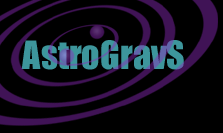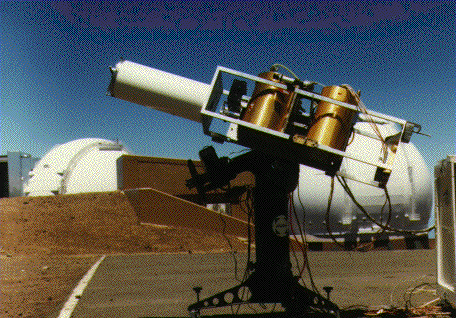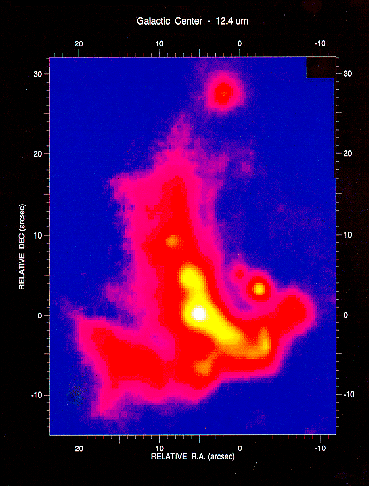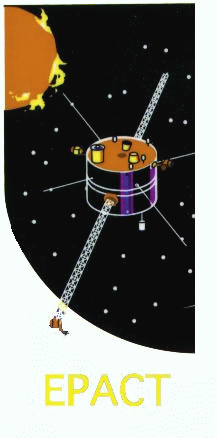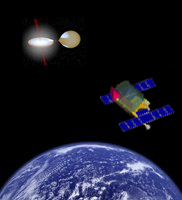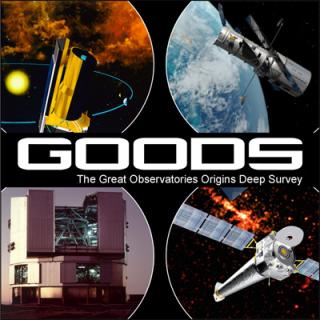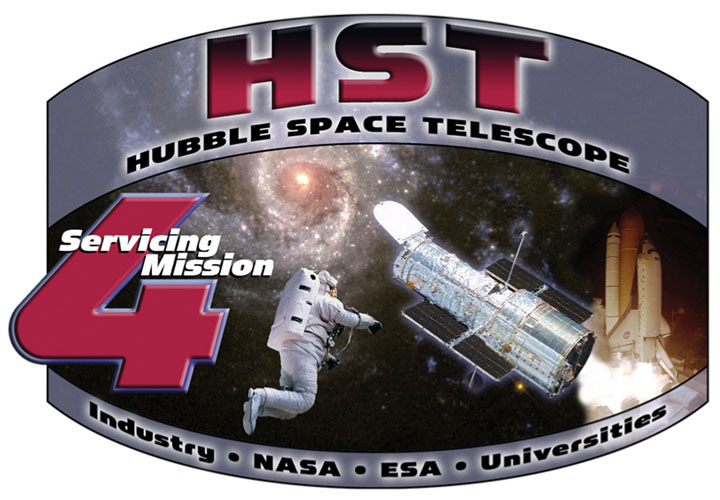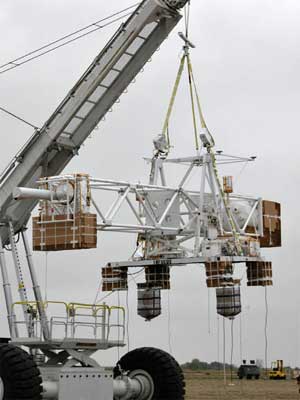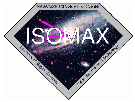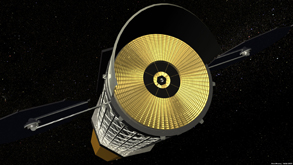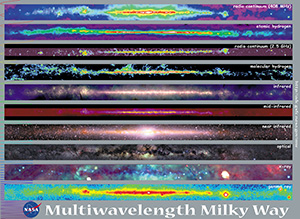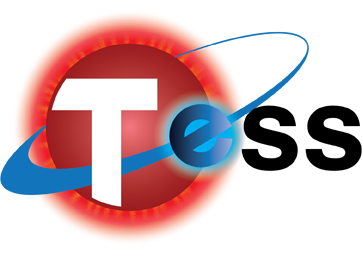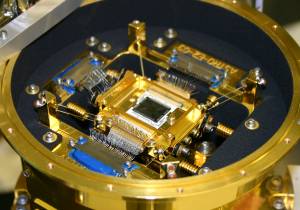ASD Website Archive
All of the websites on this page are kept for archival purposes only. The content is no longer updated.
Advanced Cosmic Ray Composition Experiment for the Space Station (ACCESS), a galactic cosmic ray detector, planned to help us understand the origin, composition, distribution and life span of elementary particles in our galaxy.
The Absolute Radiometer for Cosmology, Astrophsyics, and Diffuse Emission (ARCADE) was designed to look back to the dawn of the Universe to observe the transition out of the "cosmic dark ages" as the first stars ignited in nuclear fusion and the Universe began to resemble its current form.
The Brackett Alpha Mapper (BAM) project was dedicated to the study of the diffuse ionized interstellar hydrogen in the Galactic plane. The primary goal of was to explore the global morphology and energy balance of the warm ionized component of the Galaxy and its relation to the other phases of the ISM.
Large unmanned helium balloons provide NASA with an inexpensive means to place payloads into a space environment. The unique capabilities of this program are crucial for the development of new technologies and payloads for NASA's space flight missions.
The Catalog of Infrared Observations (CIO) Version 5.1 is a database of over 396,000 published infrared observations of more than 64,000 individual astronomical sources over the wavelength range from 1 to 1000 microns. Version 5.1 includes observations published through 1998. The last printed edition of the Catalog (Third Edition) was released in June 1993 as NASA Reference Publication RP-1294.
Dr. John C. Mather of NASA's Goddard Space Flight Center won the 2006 Nobel Prize for Physics, awarded by the Royal Swedish Academy of Sciences. Mather shares the prize with George F. Smoot of the University of California for their collaborative work on understanding the Big Bang. Mather and Smoot analyzed data from NASA's Cosmic Background Explorer (COBE), which studied the pattern of radiation from the first few instants after the universe was formed.
This is a short review on coded aperture imaging. This paper appeared in a longer version in In 't Zand (1992).
The Energetic Particles: Acceleration, Composition and Transport (EPACT) investigation was designed to make comprehensive observations of solar, interplanetary, and galactic particles over wide ranges of charge, mass, and intensity using a combination of 8 different particle telescopes.
The Energetic X-ray Imaging Survey Telescope (EXIST) was a proposed hard X-ray imaging all-sky deep survey mission and was recommended by 2001 Report of the Decadal Survey.
The Galaxy Evolution Explorer (GALEX) was a NASA Small Explorer Mission launched April 28, 2003. GALEX performed the first Space Ultraviolet sky survey.
The Great Observatories Origins Deep Survey (GOODS) data track the formation and evolution of galaxies across cosmic time and map the history of universal expansion using high redshift supernovae.
The Gamma-Ray Imaging Spectrometer (GRIS) has been an extraordinarily successful balloon-borne instrument which uses germanium detectors for high resolution gamma-ray spectroscopy.
The Hubble Space Telescope (HST) was deployed from the Space shuttle Discovery during STS-31 on April 25, 1990. Hubble imagery has both delighted and amazed people around the world and has rewritten astronomy textbooks with its discoveries.
The Hubble Space Telescope (HST) Servicing Mission 3A (SM3A) successfully replaced equipment and performed maintenance upgrades to the Hubble Space Telescope.
The Hubble Space Telescope (HST) Servicing Mission 3B (SM3B) is actually the fourth visit to Hubble. NASA split the original Servicing Mission 3 into two parts and conducted 3A in December of 1999. The crew of Space Shuttle Columbia conducted Servicing Mission 3B in February 2002 and performed five spacewalks over an 11-day mission.
Launched in April 1990 and with almost 20 years of historic and trailblazing science already accomplished, the Hubble Space Telescope (HST) was reborn with Servicing Mission 4 (SM4).
The IDL Astronomy Users Library is a central repository for low-level astronomy software written in the commercial language IDL. The Library is not meant to be an integrated package, but rather is a collection of procedures from which users can pick and choose (and possibly modify) for their own use.
The International Focusing Optics Collaboration for µCrab Sensitivity (InFOCµS) was a balloon-borne instrument incorporating breakthroughs in focusing optics and detectors to achieve order of magnitude improvements in both hard X-ray sensitivity and imaging resolution, with high resolution spectroscopy.
The Goddard ISOMAX experiment was a state-of-the art superconducting magnetic mass spectrometer constructed for the purpose of measuring the abundance of isotopes in the cosmic radiation. Cosmic radiation is the term used for high energy particles coming from the Sun, the Galaxy, and beyond.
Prior to its termination the International X-ray Observatory (IXO) was ranked fourth among large missions in the 2010 Astrophysics Decadal Survey, "New Worlds, New Horizons." In response, NASA has undertaken an X-ray mission concepts study to determine if alternative approaches exist to accomplish IXO's high ranking scientific objectives over the next decade.
MGEANT is a CERNLIB/GEANT based generic multi-purpose Monte-Carlo simulation package appropriate for gamma-ray astronomy which allows the rapid prototyping of a wide variety of detector systems.
The Multiwavelength Milky Way pages bring together several data sets to visualize images of our Milky Way galaxy in various wavelength regions. The site's intent is to present and explain how data across the electromagnetic spectrum are used by astronomers to learn about the Milky Way's shape, size, and composition.
Even at night, the Earth's atmosphere glows from reflected starlight, moonlight, man-made ultraviolet (UV) light and molecular processes. This instrument was designed to measure this UV "nightglow", hence the mission name, NIGHTGLOW!
OWL (Orbiting Wide-angle Light collectors) was a proposed space-based mission to determine the energy, direction and interaction characteristics of large numbers of high energy cosmic rays.
Sinlge Aperature Far-Infrared Observatoy (SAFIR) was a mission concept proposed to address several fundamental problems in astrophysics, from the formation of stars and planets in our own neighborhood to the coalescence of galaxies in the early universe.
The Transiting Exoplanet Survey Satellite (TESS) is an Explorer-class planet finder. In the first-ever spaceborne all-sky transit survey, TESS will identify planets ranging from Earth-sized to gas giants, orbiting a wide range of stellar types and orbital distances.
TIGER (Trans-Iron Galactic Element Recorder) was a balloon-borne NASA instrument that had three successful flights: one from Fort Sumner, NM (summer of 1997), and two from Antarctica (December 2001 - January 2002 and December 2003 - January 2004). The TIGER instrument measured the elemental composition of cosmic rays heavier than iron.
XRS-2 was a new generation of X-Ray Spectrometer. It was to measure the spectrum of celestial objects in the "soft" X-ray range (200 to 10,000 eV), to much higher resolution than has been possible up to now.




